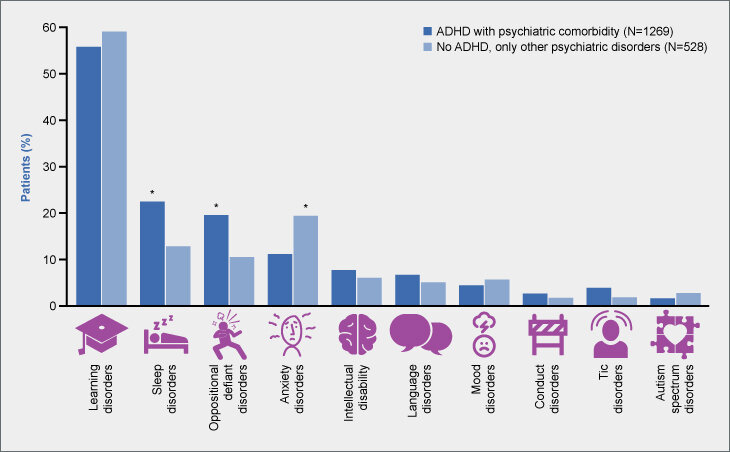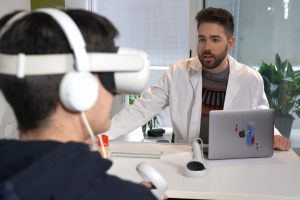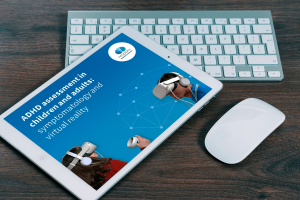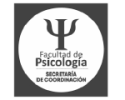ℹ️ Si quieres leer este contenido en español, haz clic aquí.
Attention problems are identified relatively quickly at home and in schools. But are they the source of the problem or a consequence? Why do some professionals fail to diagnose ADHD correctly? What clues does neuropsychological assessment with virtual reality offer to detect whether attention problems indicate anxiety or ADHD? We compile some of the most frequently asked questions about anxiety and ADHD, their relationship, diagnosis and comorbidity.
Is anxiety a psychological disorder?
Experiencing fear, worry, anxiety or panic at certain times in certain circumstances is normal and very common. However, when these feelings are prolonged over time, disproportionate to the real danger and begin to interfere with daily life, we can begin to talk about anxiety disorders. One of the most notorious symptoms of these disorders are distractions, which can sometimes be confused or hidden behind attention problems or even ADHD.
Is ADHD over-diagnosed?
Attention deficit hyperactivity disorder (ADHD) affects millions of children and often persists into adulthood. ADHD includes a combination of persistent problems such as difficulty maintaining attention, hyperactivity and impulsive behaviour. There has been a marked increase in the prevalence of attention deficit hyperactivity disorder (ADHD) in recent years. Some see this trend as positive and believe it reflects better detection of ADHD, and others argue that the disorder is still under-diagnosed. Furthermore, a third group however believes that ADHD is over-diagnosed, among other reasons, because it is confused with other disorders whose symptoms are not as obvious.
- We recommend reading this critical review that analyses the causes of possible overdiagnosis of ADHD in North America, summarises empirical results on factors that may contribute to an increase in the number of ADHD diagnoses and proposes clinical recommendations consistent with its findings.
Anxiety vs ADHD
Although ADHD and anxiety disorders are two completely different pathologies, some of their symptoms are similar. In fact, they can often co-exist and exacerbate each other. One of the main differences between ADHD and anxiety is that ADHD symptoms usually begin to be visible during childhood, whereas anxiety usually emerges later in the personal development. ADHD symptoms primarily involve problems with focus and concentration. Anxiety symptoms, on the other hand, involve problems with restlessness, nervousness and fear. In terms of the nature of the distraction, the difference between ADHD and anxiety ultimately comes down to whether the person is not concentrating because of fearful and apprehensive thoughts or because they are easily distracted even though their mind is calm.
Anxiety and ADHD comorbidity in childhood and adolescence
Most children with ADHD show some symptoms of anxiety such as fear of sleeping alone or of being separated from their parents, exaggerated concern for their family’s health and well-being, physical discomfort when they go to school, etc. They are also related to school failure and criticism received in the family environment and in the academic environment. Children with ADHD who suffer from anxiety mainly manifest generalised anxiety disorder, separation anxiety disorder, school stress, obsessive compulsive disorder and even social phobia.
Psychiatric comorbidity in young people, by the ADHD institute

How to tell if it’s ADHD or Anxiety
A proper diagnosis to develop an effective treatment plan requires a medical history that pays special attention to these 3 pillars:
- Interview
- Behavioural observation
- Psychological assessment
In addition to interviews with patients and their families and observations, a complete psychological evaluation must be included with tools that have a high psychometric quality, such as the ones offered by Nesplora. In each of our products professionals can find the technical data sheet where these characteristics are indicated, as well as the convergence studies with the best known classical tests. When the results of the assessment reveal attention problems, the professional must investigate during the interview the content of the thoughts that cause the difficulty in maintaining attention.

Assessment of attentional processes with Virtual Reality
Thanks to the immersion generated by virtual reality, the professional is able to observe the behaviour during the test as it occurs in the patient’s daily life. Virtual reality makes it possible to observe behaviours such as a patient removing their device during homework to check whether their family members are there or have left. This type of behaviour provides clues to probe the conversation with the patient.
Head tracking for assessing attention
The Nesplora tests also record the head movement of the person being tested. When the person does not respond to the stimuli, even though they are looking at the board on which they are being presented, we can intuit that the person was distracted by their own thoughts. In one of our training webinars, Dr. Christian Bedford points out the usefulness of head tracking, or head movement recording, in the Nesplora tests, as one of the features he finds most useful in identifying the type of distraction. In addition to motor activity, Nesplora Aula and Nesplora Aquarium assess, among other variables, selective and sustained attention, impulsivity, processing speed and the tendency to be distracted, which are key for the differential diagnostic support of ADHD.
Is Virtual Reality effective in assessing attention in people with anxiety?
This study by Voinescu published in the journal Virtual Reality examined the effectiveness of Nesplora Aquarium in assessing participants with low and high symptoms of anxiety and depression. Participants took the Nesplora Aquarium test, a continuous performance test where they had to respond to stimuli (fish species) in a virtual aquarium, as well as paper-and-pencil and computer-based tests. Participants’ performance in Nesplora Aquarium was positively associated with classical measures of attention and inhibition, and effectively predicted symptoms of anxiety and depression beyond traditional cognitive measures, such as psychomotor speed and executive functioning, spatial working memory. The authors concluded that virtual reality is a safe, enjoyable, effective and more environmentally friendly alternative for the assessment of attention and inhibition among people with elevated symptoms of anxiety and depression.
So… do the Nesplora tools diagnose ADHD and/or Anxiety?
If you are a mental health professional and you are thinking that we are going to tell you that by buying our neuropsychological assessment tests you are going to get your diagnosis right, you are wrong. We have already mentioned above that at Nesplora we have the tools with the highest reliability and ecological validity thanks to the precision provided by virtual reality. They have more normative studies and scientific publications than most traditional batteries for the evaluation of attention, memory and executive functions (here you can see our tests and their technical data sheets).
It is important to use the most reliable and accurate assessment batteries, in fact, doing so is part of the ethical and deontological codes of the health professional. But this is not enough. No tool, however accurate or innovative, will replace the work of the clinician in diagnosis. It is the professional who has to make a complete diagnosis, based on a combination of information from assessments, interviews, observations, reports from family members and teachers… and, of course, the clinical eye that characterises an expert.
You might also find this interesting…
You may not be a health professional, but you suspect that you or someone in your environment may have attention or anxiety problems. In that case, we recommend that you look here for your nearest specialist in our international network of professionals using Nesplora.
You can write to customers@nesplora.com with any questions and we will get back to you.
Follow us on Facebook, Twitter, Instagram, LinkedIn and YouTube to stay tuned for more content like this.












